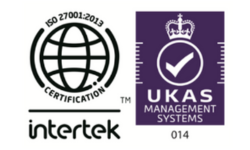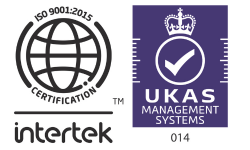Statutory Sick Pay (SSP), maternity leave and pensions differ from country to country, with the UK offering some of the worst rates compared to European countries. This blog will explore the varying rates across different countries and highlight the fact that the UK government and businesses should be doing more to support their staff in terms of pay.
So where do the UK sit compared to other countries and how can they improve?
Statutory Sick Pay (SSP)
Research by Vouchercloud shows that the UK and Ireland are lagging far behind Switzerland and Liechtenstein when it comes to weekly and monthly sick pay.
In the UK, people only receive 9% of their weekly salary in sick pay, whereas across Europe people tend to receive around 65% of their weekly salary, emphasising that the UK is extremely lacking in its care and support for those on sick leave.
Below is a table representing the average weekly sick pay given by various countries:
)
When it comes to sick pay, in many countries there is a ‘waiting period’ that ranges between 1 and 9 days, where no money is paid out by the employer or government.
It’s important to note that many employers pay staff more than the minimum sick pay and can give them more sick days if they wish to. Due to this, a country’s sick pay may be better than it appears, however this blog focuses on minimum pay set by the government.
How does sick pay work in the UK?
In the UK, the first 3 days a person is off sick is referred to as ‘qualifying days’ where employees aren’t paid statutory sick pay. Sick pay can be taxable but usually doesn’t meet the tax thresholds.
In terms of weekly sick pay, the minimum people can receive is £35.96, which accounts for 8.68% of the average weekly salary in the UK. However, you can receive up to £99.35 a week.
A month of sick pay equates to £305.71, which is about 18.44% of the average UK monthly salary.
These figures are significantly lower than other countries, putting the UK near the bottom of the list of best countries for statutory sick pay.
Maternity leave by country
When it comes to maternity leave, the best leave considered by employees would be those that offer flexible leave and provide compensation. The following rankings are based on statutory maternity pay rates, however companies can offer ‘enhanced’ maternity pay. This is where companies offer more than the minimum maternity rate. This could take form in receiving full pay for 26 weeks and 13 weeks of maternity.
With this in mind, the top countries for maternity leave are:
)
Bulgaria
Bulgaria has the most generous maternity leave, with female employees being entitled to up to 410 days of maternity (in a phased approach). The maternity leave also covers 90% of an employee’s salary through social security.
How does Bulgaria’s maternity leave work?
● Maternity leave begins 45 days before birth, by law.
● All mothers get 42 days leave, regardless of whether the child survives or not, post birth.
● 48 days of regular maternity leave is given once released from hospital.
● 275 days maternity are discretionary based on families needs. If a mother requests the days in writing then this must be honoured by the employer.
Greece
In Greece employees can take up to 43 weeks of maternity leave, where they’re compensated through both their employer and social security funding.
How Greece’s maternity leave works:
● Female employees are entitled to 8 weeks of leave before birth and 9 weeks after birth, totalling in 17 weeks for basic maternity leave.
● 43 weeks of maternity leave can be achieved through working less hours daily over several months.
The United Kingdom
The UK offers up to 39 weeks of paid maternity leave, with a maximum of 52 weeks, made up of paid and unpaid leave. When it comes to maternity leave, the UK strikes a great balance between flexibility and length of leave.
How The UK’s maternity leave works:
● Employees are guaranteed 90% of their pay for 6 weeks, but the rest is usually paid at the statutory maternity leave rate (£156.66) or 90% of their salary depending on which one is lower.
● Maternity leave automatically starts within 4 weeks of the due date if the pregnant employee misses work due to a pregnancy related problem or immediately after birth if they have a healthy pregnancy. However you can start maternity leave up to 11 weeks before birth as well.
Croatia
Croatia offers 30 weeks of maternity leave, which usually starts 28 days before the due date and can last until the child is 6 months old. After the child is 6 months old, additional parental leave is available if needed.
People tend to receive 100% of their salary, except from irregular workers where it isn’t easy to work out their typical salary. Maternity benefits are paid through social security programs and are factored into an employer’s statutory contributions.
How does Croatia’s maternity leave work?
● In healthy pregnancies, compulsory leave starts 28 days prior to birth, but for those with pregnancy complications compulsory leave starts 45 days prior to birth.
● Compulsory leave lasts for at least 70 days after birth.
● Additional parental leave is available until the child reaches 8 years old.
Chile
In Chile workers can take up to 30 weeks of leave, with 18 weeks being the standard. Women are entitled to 6 weeks leave before birth and 12 weeks after birth.
Premature births or low birth weight can add an additional 6 weeks leave for women. Adding on to this, standard maternity leave is paid through the social security system, but if more time is needed; an additional 12 weeks can be taken made up of flexible leave. This could include working reduced hours in exchange for subsidised payments, depending on the agreement made with the employer.
Pensions by country
Pensions are becoming more and more important for people, due to rising inflation prices and the cost of living crisis. Due to this it’s important to understand whether various pensions across the world will meet people’s needs in the future.
Currently Iceland has the best pension system in the world, due to its healthy mix of public and private pensions.
According to the European Commission website, to take full advantage of the old age pension you must have lived in the country for at least 40 years (aged 16-67). Pension programmes are also based on income, meaning the amount can decrease if you have more than one job and can be cancelled if your income exceeds a certain amount.
Below is a list of the top countries for pensions:
)
How do pensions work in the UK?
The UK has three types of pensions: state pensions, workplace pensions and personal pensions.
State pensions
State pensions are provided by the government once people reach a certain age, which is currently 65, however this is expected to increase in the future. To be eligible for the pension people need to build up ‘qualifying years’, usually completed by making National Insurance contributions.
Once you start receiving your state pension it’s guaranteed for the rest of your life, with the weekly rate being £185.15 for the 2022/23 tax year.
Workplace pensions
Employers must enrol their staff into a pension scheme, where both the employer and employee make contributions and the government boosts contributions through tax relief.
Despite employers needing to enrol staff into a workplace pension scheme, employees can opt out if they don’t want to make contributions.
Personal pensions
Personal pensions are when people take out pensions by themselves (usually taken out by self employed people).
How do personal pension schemes work?
● You don’t receive employer contributions.
● You can sometimes take contributions holidays’ where contributions don’t have to be made. If you have a SIPP (self-invested personal pension) you can choose what assets your pension is invested in.
How can Payescape help
Here at Payescape, our payroll software can help you keep on top of all types of payroll including sick pay, maternity pay and pension contributions.
Book a demo with us today to see how we can help you organise your payroll efforts.














